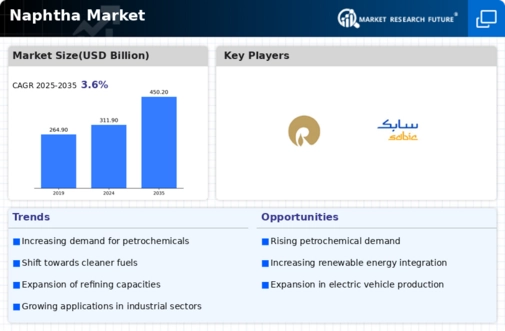Top Industry Leaders in the Naphtha Market

The naphtha market, a key petroleum derivative fueling diverse industries, presents a constantly evolving landscape. Understanding the competitive dynamics driving this market is crucial for both established players and aspiring entrants. This analysis delves into the strategies adopted by industry leaders, the factors influencing market share, noteworthy news, and recent developments shaping the landscape.
Market Strategies: Fueling Growth:
- Integration and Diversification: Leading players like Exxon Mobil and Reliance Industries prioritize vertical integration, controlling production, refining, and distribution. Others diversify into downstream sectors like petrochemicals and plastics, creating demand for naphtha feedstock.
- Technological Innovation: Investments in cleaner and more efficient refining technologies are gaining traction. Companies like Neste are pioneering renewable naphtha production from biomass, offering a sustainable alternative to conventional sources.
- Regional Expansion: Asia Pacific, particularly China and India, remains the largest and fastest-growing consumer of naphtha. Companies are strategically expanding refining capacity in these regions to capture market share.
- Cost Optimization and Operational Efficiency: Streamlining operations and minimizing production costs are critical in a volatile market. Players are adopting automation, digitalization, and advanced logistics to stay competitive.
- Partnerships and Acquisitions: Strategic partnerships and acquisitions enable access to new markets, technologies, and resources. Recent examples include Reliance Industries' collaboration with Saudi Aramco for naphtha cracker projects.
Market Share Determinants: A Balancing Act:
- Crude Oil Prices: Fluctuations in crude oil prices directly impact naphtha pricing and demand. Stable prices favor stable markets, while volatility creates uncertainty and discourages investment.
- Alternative Petrochemical Feedstocks: Shale gas and liquefied petroleum gas (LPG) emerging as cheaper alternatives for certain applications can cannibalize naphtha demand, challenging market share.
- Regulations and Environmental Concerns: Stringent environmental regulations and the push for decarbonization are encouraging the adoption of renewable naphtha. Companies with a head start in this segment can gain a competitive edge.
- Regional Consumption Patterns: Asia Pacific's continued economic growth and rising industrialization fuel its dominance in naphtha consumption. Companies with strong regional footprints are advantaged.
- Supply Chain Security and Infrastructure: Secure access to crude oil and efficient logistics infrastructure are crucial for uninterrupted supply and competitive pricing. Disruptions in these areas can impact market share.
List of Key Players in the Naphtha Market
- Chevron Corporation
- Reliance Industries Limited
- Shell Chemicals
- SABIC (Saudi Arabia)
- BP PLC (UK)
- Exxon Mobil Corporation. (US)
- China Petrochemical Corporation
- Indian Oil Corporation Ltd (India)
- Novatek (Russia)
Recent Developments:
August 2023: Reliance Industries announces plans to expand its naphtha cracking capacity by 20%, aiming to capitalize on rising demand for petrochemicals.September 2023: Reliance Industries commissions a new naphtha cracker in India, further solidifying its position as the leading naphtha producer in Asia.October 2023: Saudi Aramco collaborates with a leading chemical company to develop advanced technologies for naphtha conversion, aiming to improve efficiency and yield.November 2023: The International Energy Agency (IEA) releases a report highlighting the growing role of naphtha in the global petrochemical industry.December 2023: The US imposes sanctions on Russian naphtha imports, disrupting supply chains and creating uncertainty in the global market.

